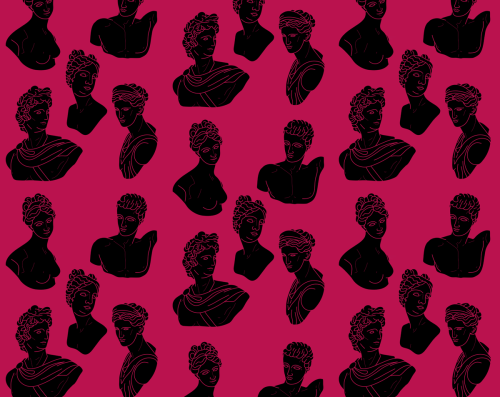#athenian

Alcibiades Being Taught by Socrates by François-André Vincent
Athenian Late Geometric krater, c. 750 BCE, about 4 feet tall, New York, Metropolitan Museum of Art
Post link
Dioskouria

Dioskouriais the celebration of the hero-gods Kastor and Polydeukes (Pollux) - the Dioskouroi, sons of Leda, but from different fathers; Kastor from Tyndareus and Pollux from Zeus. Frequently referred to as the Lords, anakes, their festival is also known as Anakeiain Athens and they are often invited guests to a theoxeniameal.
In Sparta the Dioskouria was celebrated with sacrifices, rejoicings, and drinking (Paus. 4.27.1), and at Athens they would prepare a meal consisting of cheese, a barley-cake, ripe figs, olives, and garlic, in the Prytaneium. Known in their mortal lives as skilled horsemen, horse-races and similar games would have been common entertainment during the lords’ festival.
Frequent elements of the theoxeniaritual would also likely be common in their festival, including an invitation, the arrangement of meats, cakes, fruits, and wine on a table, with a ‘couch,’ decorated and made comfortable with rich textiles, available for the gods (or heroes, in other cases) to recline and enjoy the meal. The placement of the couch and the invitation are the main tributes that lend the word ‘xenia’ to the name as they are an act of hospitality and entertainment of a guest.
Personal Practice:
In Argos, near the grave of Argus and further along a sanctuary of Eilethya, is a temple to the Dioskouroi. In it were ebony wood statues of the Dioskouroi, their sons and their sons’ mothers, as well as statues in ebony wood and a little ivory of their horses. (Paus. 2.22.5)
Though appearing frequently in other Doric states, there is no clear evidence of the Dioskouria held in Argos. Therefore I have placed their festival in my calendar around the two weeks prior to the summer solstice in December, as this is the time when the Geminid meteor shower appears.
The Geminids were first discovered in 1862 and they occur because the Earth is travelling through the left-over material from the tail of the asteroid 3200 Phaethon. This asteroid is considered a rock comet which is an asteroid that shares some of the characteristics with a comet, including a comet tail, and it has surface jets. The Gemini Constellation after which the meteor shower is named appears in [the southern] sky around 10:00 pm so it’s best to go out and watch for them after midnight when Gemini is higher in the sky as the shower gets better throughout the night. (Perth Observatory, article for December 2021)
Perseus, Dictionary of Greek and Roman Antiquities
Argos and the Argolid R.A. Tomlinson pg.213
Cults and Rites in Ancient Greece pg.145-154



